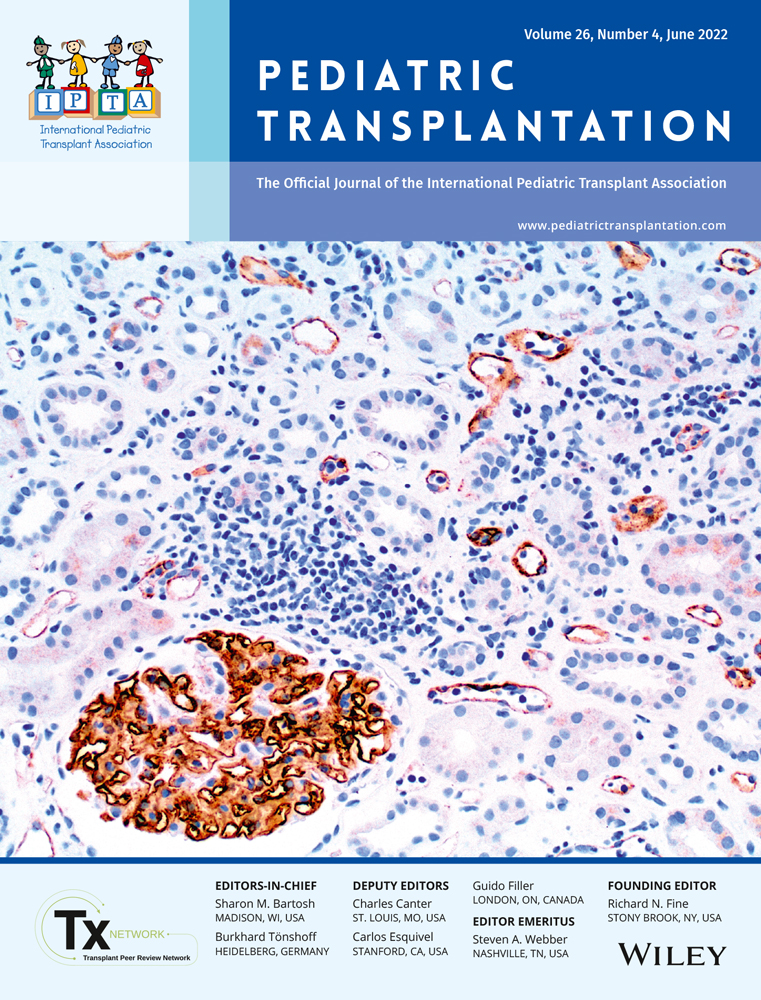Nondestructive versus advanced post-transplant lymphoproliferative disorder in a single-center pediatric kidney transplant population
Funding information
The authors have no funding sources to disclose
Abstract
Background
Pediatric kidney transplant recipients are at risk for the development of post-transplant lymphoproliferative disorders (PTLD), a group of potentially devastating diseases that present on a spectrum of severity ranging from nondestructive PTLD to more histologically destructive lesions. Currently, there is inadequate evidence to guide evaluation and management of nondestructive PTLD.
Methods
This is a single-center case series of pediatric kidney transplant recipients between January 1, 2008 and December 31, 2019, who were diagnosed with PTLD. The aim was to describe clinical characteristics, presentation, and management of nondestructive versus advanced PTLD.
Results
Eighteen patients were diagnosed with nondestructive PTLD and seven with more advanced PTLD histopathology. The majority (66.7%) of nondestructive PTLD patients (n = 16) presented with tonsillar hypertrophy and/or snoring and were managed conservatively, with minimal reduction in tacrolimus dose and no further evaluation. No patient progressed to more advanced PTLD. Advanced PTLD patients (n = 7) were more likely to present with fever, elevated creatinine, a new mass of gastrointestinal symptoms. They received workup with imaging and oncology consultation, and were managed with chemotherapy.
Conclusions
Patients with nondestructive PTLD often present with symptoms of sleep-disordered breathing and can be managed conservatively with excellent clinical outcomes. More study is needed to guide care of this under-researched population.
CONFLICT OF INTEREST
The authors have no conflict of interest to disclose.
Open Research
DATA AVAILABILITY STATEMENT
The data that support the findings of this study are available on request from the corresponding author. The data are not publicly available due to privacy or ethical restrictions.




